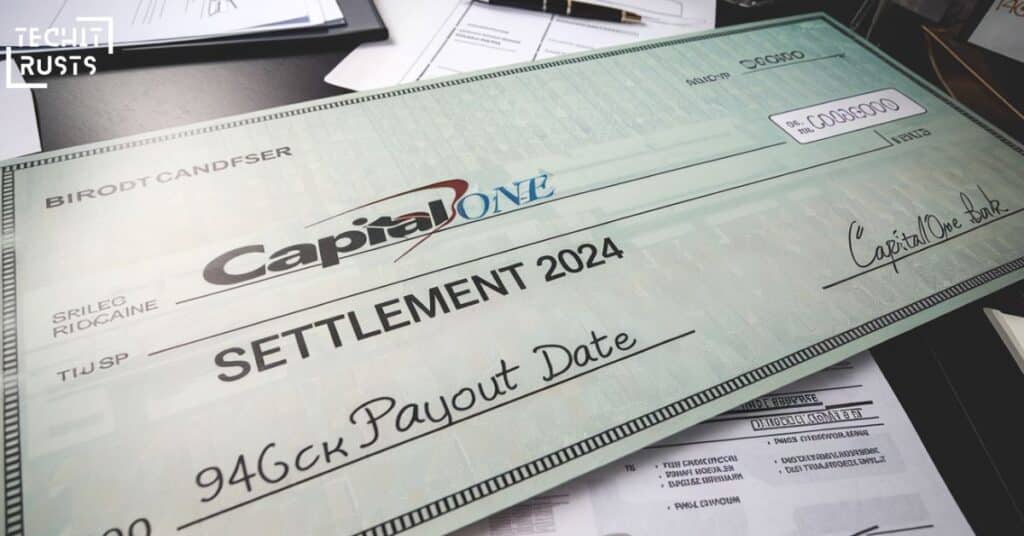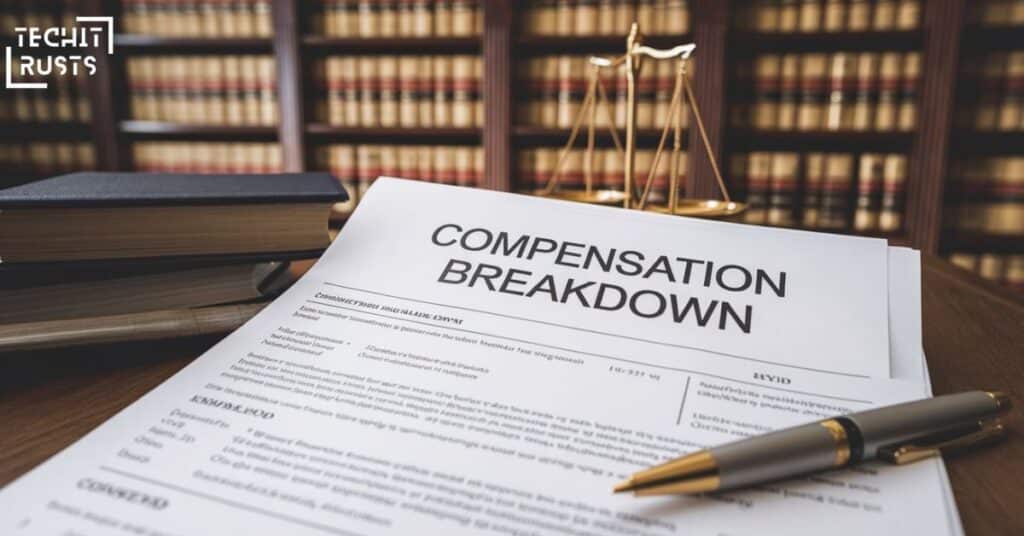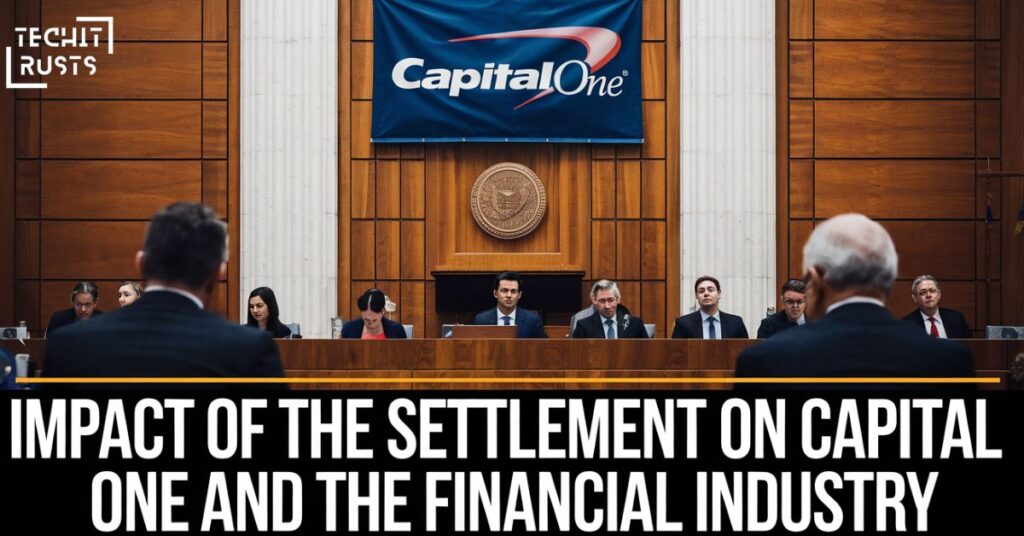The Capital One data breach of 2019 was a stark reminder of the vulnerabilities that exist in the digital age. As millions of customers’ sensitive information was exposed to cybercriminals, the repercussions were immediate and widespread. Fast forward to 2024, and affected customers are finally seeing a resolution in the form of a class-action lawsuit settlement.
This settlement, which is set to begin its payout timeline in 2024, offers financial compensation, identity protection services, and more for those impacted by the breach.
In this detailed guide, we’ll cover everything you need to know about the settlement, including the process of filing a claim, what compensation you can expect, and the financial impact of data breaches on both consumers and the banking industry. Let’s dive into the key details and answer the pressing questions surrounding this significant case.
Introduction to the Capital One Bank Settlement 2024 Payout Date
The Capital One settlement, finalized in 2024, is one of the most significant outcomes in recent memory for a data security breach compensation case. Customers affected by the Capital One data breach 2019 have been waiting for this moment, as it promises to offer restitution for the financial and personal security losses suffered due to the breach.

The payout timeline 2024 is a crucial aspect of the settlement. For affected customers, understanding when and how they’ll receive their compensation is a top priority. Additionally, this settlement has far-reaching implications, not just for the individuals involved but also for cybersecurity in banking as a whole. The case has led to increased regulatory oversight in banking and forced many institutions to rethink their approach to personal data protection.
By the time you finish this article, you’ll have a thorough understanding of:
- How to file your claim
- What types of compensation are available
- What to expect from the payout timeline
- Broader impacts on the banking sector and future protections for consumers
Let’s start by revisiting the infamous Capital One data breach of 2019 and the chain of events that led to this substantial settlement.
Background of the Capital One Data Breach
In July 2019, Capital One announced a major data breach that exposed the personal information of around 98 million customers. A hacker gained unauthorized access to the bank’s servers, stealing sensitive data like Social Security numbers, addresses, and bank account details.
This breach impacted both existing credit card holders and those who had applied for credit. The hacker, a former Amazon Web Services employee, exploited a weakness in Capital One’s system. This breach became one of the largest in U.S. history, causing widespread concern among affected customers.

The stolen information included highly sensitive details, making people vulnerable to identity theft and financial fraud. After the breach, Capital One faced lawsuits and government investigations.
Customers accused the bank of failing to properly secure their data. The legal battles continued for years, with Capital One ultimately agreeing to a $190 million settlement in 2024. This settlement aimed to provide compensation and protection for those impacted by the breach.
The 2019 Capital One Data Breach Incident
In July 2019, Capital One made headlines for all the wrong reasons. A massive data breach had exposed the sensitive personal information of over 100 million customers.
The breach was orchestrated by a former software engineer who exploited a misconfigured firewall in Capital One’s cloud computing infrastructure, which was hosted by Amazon Web Services (AWS). This breach resulted in the theft of vast amounts of personal data, including:
- Social Security numbers
- Bank account numbers
- Credit scores
- Customer addresses
- Credit card application data
The sheer volume of the stolen information caused an uproar. It wasn’t just the number of people affected but the sensitivity of the data itself. Social Security numbers and bank details in the wrong hands can lead to identity theft, financial fraud, and a host of other problems.
The Capital One data breach 2019 was one of the largest cyber incidents involving a major financial institution, exposing glaring issues in digital banking security. Customers were left wondering how a company with such vast resources could allow such a breach to occur.
Legal Challenges and Consumer Response
As news of the breach spread, lawsuits soon followed. Legal challenges from the data breach came from multiple directions, including consumer groups, shareholders, and regulatory bodies. These legal battles laid the foundation for what would eventually become the class-action lawsuit settlement finalized in 2024.
One of the key plaintiffs in the case argued that Capital One had failed to implement basic security measures that could have prevented the breach. Additionally, the lawsuit alleged that the bank had been aware of vulnerabilities in its systems but had failed to act in a timely manner.
This negligence resulted in countless customers suffering financial loss claims, including unauthorized credit card charges and identity theft. Throughout the litigation process, Capital One denied wrongdoing but eventually agreed to settle. The settlement aimed to provide restitution to affected customers while also addressing data security breach compensation concerns.
Key Details of the 2024 Capital One Settlement
The 2024 Capital One settlement resulted from a class-action lawsuit following the 2019 data breach. The total settlement amount is $190 million, intended to compensate affected customers. Eligible individuals can receive up to $25,000, depending on documented financial losses caused by the breach.
The settlement also includes free identity protection services for up to five years, helping customers safeguard their personal information. Payments are being distributed in multiple rounds. The first round began in September 2023, followed by a second round in September 2024.
Another set of payments is expected in late 2024 for those affected by Capital One’s representment fees. These payouts are either processed digitally or sent by check. Customers can track their payment status through the official settlement portal.
Settlement Terms and Amount
The final settlement reached in 2024 resulted in a $190 million payout. This sum will be used to compensate affected customers for the financial and emotional toll of the breach. Here’s a breakdown of how the settlement will be distributed:
| Settlement Component | Details |
| Total Settlement Amount | $190 million |
| Compensation for Financial Loss | Up to $25,000 per individual for proven losses and out-of-pocket expenses |
| Additional Compensation | Identity theft protection and credit monitoring services |
| Number of Affected Customers | Over 100 million individuals |
The settlement covers not only financial loss claims but also a range of non-monetary compensation, such as identity protection services and credit monitoring services. For those who were impacted, this settlement provides some peace of mind, knowing that steps have been taken to protect their information in the future.
Who Is Eligible for Compensation?
To qualify for compensation from the class-action lawsuit settlement, individuals must meet certain criteria:
- You must have been a Capital One customer or have applied for a credit card or banking services between 2005 and 2019.
- Your personal data must have been compromised during the Capital One data breach 2019.
- You must submit a valid claim, including documentation of any financial losses you suffered as a result of the breach.
Eligible customers can file their claims through the settlement administrator portal. Claims will be reviewed on a case-by-case basis, with compensation amounts determined based on the severity of the losses incurred.
In addition to financial compensation, affected customers will receive identity protection services for a specified period, as well as credit monitoring services to help detect any suspicious activity on their accounts.
The Payout Process and Timeline
The payout process for the 2024 Capital One settlement is divided into several stages. The first round of payments began in September 2023 for individuals who successfully filed valid claims. These payments were made either digitally or through checks, depending on the claimant’s preference.

The initial distribution focused on those who experienced financial losses due to the 2019 data breach. A second round of payments started in September 2024. These payments went to claimants who had already received an initial payout.
Another upcoming round is expected for those eligible under the representment fees settlement, with payments projected by late 2024. Claimants can track their payment status through the settlement portal, ensuring they stay updated on when to expect their compensation.
When Will the Payments Start?
The most common question surrounding the settlement is, “When will I receive my payout?” According to the court documents, payments are expected to begin after the final approval hearing in July 2024. Once the court gives the green light, the claims process will officially move forward.
It’s important to note that the payout timeline 2024 will be staggered, meaning not all customers will receive their payments at the same time. The timeline for individual payments depends on factors such as:
- When the claim was submitted
- The complexity of the claim (i.e., the level of financial losses documented)
- The number of claims received
How Long Will the Payout Process Take?
While initial payments are expected to start shortly after the final approval hearing in July 2024, it may take several months for all claims to be processed. Customers with straightforward claims—such as those who incurred minor financial losses—are likely to receive their payments sooner, while more complex claims may take longer to verify.
Payment Stages: Initial and Second Round of Payments
The payout process will occur in stages:
- Initial Payments: Customers who submitted early and have straightforward claims will receive their compensation first.
- Second Round of Payments: More complicated claims that require further verification will be processed in a second round.
For most individuals, the settlement administrator portal will be the go-to resource for tracking the status of their claim. The portal will provide updates on when payments are issued and offer help if there are delays or issues in receiving compensation.
How To Claim Your Settlement Payment
Claiming your settlement payment from the 2024 Capital One settlement involves a straightforward process. First, eligible individuals must have filed a valid claim before the established deadlines. Most claimants submitted their claims through the official Capital One settlement portal or the designated settlement administrator.
It’s crucial to include all necessary documentation, such as proof of financial losses and details about unauthorized transactions. Once a claim is submitted, it undergoes a verification process. Settlement administrators will review the claim for completeness and check the claimant’s eligibility based on the criteria established for the settlement.
After verification, claimants can monitor their payment status through the official settlement portal. This portal provides updates on the progress of their claims, payment dates, and any additional steps they may need to take. If there are issues with the claim, contacting the settlement administrator for guidance is recommended.
Step-by-Step Claim Filing Process
- Visit the Settlement Administrator Portal
Head to the official portal designated for claim submissions. This is where you will begin the filing process. - Enter Your Personal Information
You’ll need to provide key details such as your name, affected account number, and contact information. Ensure that all information is accurate. - Submit Evidence of Financial Loss
If you are claiming financial loss compensation, you’ll need to submit documentation to prove the losses you incurred. This may include:- Bank statements
- Fraudulent transaction records
- Identity theft reports
- Receipts for expenses related to identity restoration
- Complete and Review
Double-check all the details before submitting your claim. Mistakes or missing information could delay the payout process. - Submit
Once everything is in order, submit your claim. You’ll receive a confirmation notice, which you should keep for your records.
Verification of Claims and Common Mistakes
Not all claims will be processed immediately, especially if there are errors or missing documentation. Some common mistakes to avoid include:
- Failing to attach proper documentation
- Entering incorrect personal information (e.g., misspelling names or providing incorrect account numbers)
- Submitting duplicate claims
The settlement claim process includes a verification stage, where each claim is carefully reviewed to ensure it meets the eligibility requirements. Claims with errors or missing details may face delays or rejection, so it’s crucial to be thorough.
Tracking Your Payment Status
After filing your claim, you can track its progress via the settlement administrator portal. You’ll be able to check the status of your payment
and receive updates on any potential issues. The portal will also notify you once your claim has been approved, and when to expect payment.
Compensation Breakdown
The compensation for the 2024 Capital One settlement is structured to provide financial relief to those affected by the 2019 data breach. Individuals can receive up to $25,000, depending on their documented losses. This includes costs related to unauthorized transactions, identity theft, and other financial damages.

Additionally, claimants can seek compensation for time spent addressing issues caused by the breach, such as resolving credit report errors or dealing with identity theft recovery.
Besides monetary payouts, the settlement offers free identity protection services for up to five years. These services include credit monitoring, dark web surveillance, and identity restoration support. Even if a claimant didn’t experience financial loss, they are eligible for these services, ensuring long-term protection against future identity theft.
What You Can Expect to Receive
Compensation amounts will vary based on the severity of your financial losses. The key types of compensation include:
- Financial Reimbursement: If you suffered financial losses as a result of the data breach, you can receive compensation for those losses. This includes unauthorized charges on your credit card, identity theft costs, and other out-of-pocket expenses.
- Identity Protection Services: Affected customers will receive identity theft protection services for a designated period.
- Credit Monitoring Services: The settlement also includes credit monitoring services, which will help customers keep track of any changes to their credit reports and detect suspicious activity.
Maximum Payout Limits
For individuals with significant financial losses, the maximum payout may be as high as $25,000. However, not all claims will reach this amount. The majority of customers will receive compensation between $100 and $500, depending on the extent of their losses and the documentation provided.
Non-Monetary Compensation
In addition to direct payments, customers will benefit from non-monetary compensation designed to protect them from future risks. These services include:
- Identity protection services: Ongoing protection against future identity theft.
- Credit monitoring services: Monitoring for unusual or suspicious activity on your credit reports.
The goal of this compensation is not only to reimburse affected customers but also to help mitigate the long-term consequences of the data breach.
Impact of the Settlement on Capital One and the Financial Industry
The 2024 settlement has significant implications for Capital One, impacting both its finances and reputation. The $190 million payout affects the bank’s bottom line, but Capital One is financially equipped to absorb the costs. More importantly, the breach and subsequent settlement have damaged customer trust.

As a result, Capital One must work harder to rebuild its image and demonstrate a commitment to data security and consumer protection. Beyond Capital One, the settlement sends a strong message to the entire financial industry. It highlights the critical importance of data security and the need for stronger protections against breaches.
Regulatory bodies like the Consumer Financial Protection Bureau (CFPB) are likely to impose stricter guidelines for how banks manage customer data. Other financial institutions may reassess their cybersecurity measures to avoid facing similar legal challenges and reputational damage in the future.
Capital One’s Financial and Reputational Fallout
The Capital One Bank Settlement 2024 Payout Date marks a significant financial and reputational blow to Capital One. In addition to the $190 million settlement, the company faces increased scrutiny from regulators and a loss of consumer trust. The Capital One Bank Settlement 2024 Payout Date is a critical aspect for affected consumers awaiting compensation.
This settlement adds to the already substantial costs incurred by the company, including legal fees and regulatory penalties. For consumers, this breach was a wake-up call, showing just how vulnerable their personal data can be. The breach also brought into question the adequacy of data protection measures used by banks and other financial institutions.
Changes in Banking Regulations and Data Security
In the wake of the Capital One data breach 2019, regulators like the Consumer Financial Protection Bureau (CFPB) and other oversight bodies have implemented stricter regulations to protect consumer data. Cybersecurity in banking is no longer optional—it’s a necessity. Financial institutions must now adhere to stringent standards to protect personal information and prevent future breaches.
This settlement has also set a precedent for future data security breach compensation cases. Financial institutions will need to take proactive measures to protect customer data or face the consequences of lawsuits and settlements like this one.
What Should Affected Customers Do Next?
Affected customers should take several important steps to ensure they receive the compensation and protections available through the 2024 Capital One settlement. First, they should verify that their contact information is up-to-date with Capital One or the settlement administrators.
This ensures they receive timely notifications about payment timelines and any additional actions required. Next, customers should monitor the status of their claims through the official settlement portal. They can log in to check the progress of their payments and stay informed about any upcoming deadlines.
If they missed the initial claim filing deadline, they should explore other benefits available, such as free identity restoration services. Finally, staying vigilant about their financial accounts and utilizing the offered identity protection services can help safeguard against future risks.
Future Steps for Consumers
Once customers receive their compensation, there are several steps they should take to further protect their personal information:
- Enroll in the provided identity protection services: These services are a crucial part of the settlement, offering ongoing protection against identity theft.
- Monitor your accounts regularly: Even with compensation and protection services, it’s important to stay vigilant. Regularly check your bank and credit card statements for any suspicious activity.
- Review your credit reports: Utilize the credit monitoring services to keep track of any changes or new accounts opened in your name.
Long-Term Protections and Monitoring
Identity theft can have long-lasting consequences, and it’s essential for consumers to stay vigilant even after receiving compensation. Taking proactive measures, such as freezing your credit or using a credit monitoring service, can help reduce the risk of future incidents.
Frequently Asked Questions
What is the Capital One Bank Settlement?
The Capital One Bank Settlement refers to the legal resolution stemming from the 2019 data breach that compromised the personal information of over 100 million customers. In 2024, a class-action lawsuit settlement was reached, providing financial compensation and additional protections to affected individuals.
Who is eligible for compensation from the settlement?
To qualify for compensation, you must have been a Capital One customer or applied for a credit card or banking services between 2005 and 2019. Your personal data must have been compromised during the Capital One data breach 2019. You also need to file a valid claim that documents any financial losses you incurred as a result of the breach.
What types of compensation are available?
Affected customers can receive various forms of compensation, including:
- Financial reimbursement for proven losses (up to $25,000).
- Identity protection services for a specified period.
- Credit monitoring services to help detect any suspicious activity on accounts.
When will payments begin?
Payments are expected to start after the final approval hearing in July 2024. The payout process will be staggered, with initial payments going to those with straightforward claims, while more complex claims may take longer to process.
How do I file a claim for the settlement?
To file a claim, visit the settlement administrator portal, enter your personal information, and submit any evidence of financial losses. Be sure to double-check your submission for accuracy. Once submitted, you will receive a confirmation notice.
What should I do if I experience identity theft after the settlement?
If you experience identity theft after the settlement, immediately utilize the identity protection services provided as part of your compensation. Additionally, monitor your accounts and credit reports regularly. You can also consider placing a fraud alert or credit freeze on your credit report to further protect your personal information.
Conclusion
The Capital One data breach 2019 exposed the vulnerabilities in modern financial institutions and highlighted the importance of robust cybersecurity in banking. The class-action lawsuit settlement reached in 2024 offers much-needed relief for affected customers, providing financial compensation and long-term protection services.
As the payout timeline 2024 unfolds, it’s important for customers to remain informed, file their claims promptly, and take full advantage of the protections offered. This settlement not only compensates customers for their losses but also sets a precedent for how financial institutions must handle personal data protection in the future.
By staying vigilant and utilizing the tools provided through the settlement, customers can better protect themselves from future risks and navigate the evolving landscape of digital banking security.
>>>Read Also: Understanding Fayetteville Asbestos Legal Questions: Your Complete Guide

Ashi is the site admin for “techitrusts.com” and specializes in writing within the journal category. If you need more detailed information about his background or work, feel free to ask!